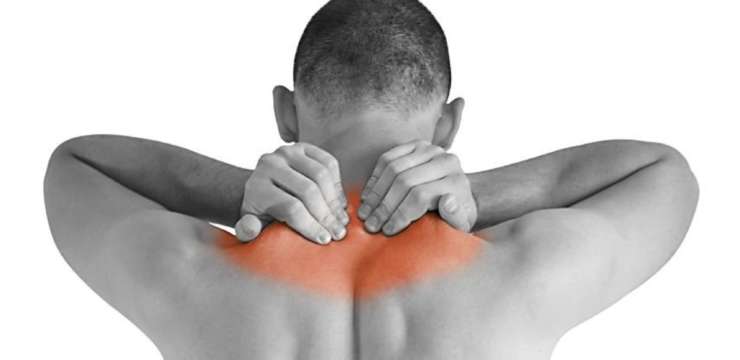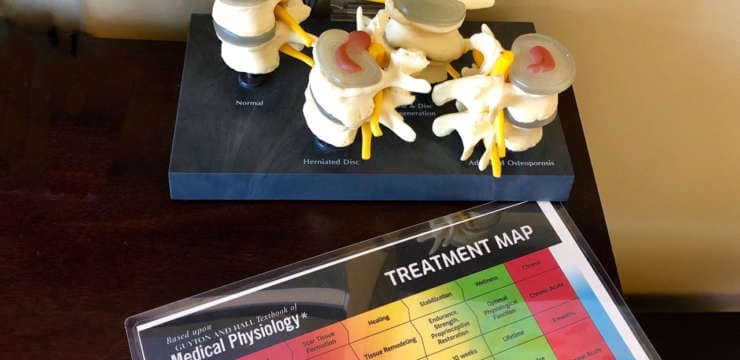Physical exercise has a powerful effect on our bodies. Most of the exercise benefits can be measurable such as body composition modification and physical endurance.…


Physical exercise has a powerful effect on our bodies. Most of the exercise benefits can be measurable such as body composition modification and physical endurance.…




Although it is not officially summer, the past few weeks sure feels like it. Especially for those with joint discomfort and pain. As the body…


Nutritional assessment is a critical step that inpatients have to go through before undergoing surgery. Unfortunately, even with the obesity pandemic, most patients fall into…


For cervical pain, there is often more than one cause and more than one course of treatment. To begin, the first step is to perform an inspection. The inspection can let us know if there is a deformity, instability, abnormal head posture, asymmetry, torticollis, or lower limb weakness. This is a crucial first step as it sets the tone for the course of treatment. Next, we have palpitation. This is where we examine if there is tenderness or masses. The areas to check are posterior in the midline, lateral, supraclavicular, and anterior. Midline tenderness in the cervical spine can be due to whiplash injuries and indicate more neck trauma. Range of motion is performed next. To obtain a proper diagnosis, we check the cervical motion in flexion (normal range is 80 degrees), extension (normal range is 50 degrees), lateral flexion (normal range is 45 degrees), and rotation (normal range is 80 degrees). Finally, we check for sensory. Sensory include numbness, tingling, burning, and pain in the neck, back, or extremities.Â
Causes of Neck Pain
Neck pain can be caused by a variety of things, as the list is long. However, the following list is used to rule out the most severe pathology to determine the root cause of a patient’s cervical pain.Â
Injury and Accidents- hyperextension and/or hyperflexion (whiplash)Â
Degenerative Disorder (osteoarthritis, degenerative disk disease, and spinal stenosis)Â
InfectionsÂ
Inflammatory Disorder (Rheumatoid arthritis, ankylosis spondylitis)Â
Tumors / Benign TumorsÂ
Cervical FracturesÂ
Inflammatory Disorders
As we take a closer look, we notice that at the root cause of any pain or discomfort occurring in the body is inflammation. Inflammation is needed to help the body heal. However, when inflammation is occurring for too long, problems begin to arise. Excessive inflammation begins to sends the wrong signals throughout our body, and additional hormones (like cortisol, the stress hormone) begin to be released. With additional cortisol, individuals begin to have trouble sleeping, weight gain, and headaches, eventually leading to an autoimmune disorder if not properly handled in the early stages. With inflammation running the body, orthomolecular health, and phase angle decline.Â
Phase AngleÂ
The phase angle is how health care professionals can monitor the integrity of cellular membranes. If the phase angle begins to decline, it has been linked directly to a decline in overall health. Similar to if phase angle increases, overall health is increasing. The integrity of cellular membranes is essential as cell survival depends on solid membranes. When the cellular wall is weak, it can collapse. From here, it is difficult for the body to take up the proper nutrients it needs. Additionally, with a weak cellular membrane, the cell is left with little to no protection from outside invaders. Stress impacts phase angle by causing individuals to release cortisol, be under adrenal stress, gain weight and decrease their overall health.
We monitor a patient’s phase angle with the use of the InBody 770. This advanced machine allows us to not only track the phase angle of our patients but many other areas of their health as well, including but not limited to intracellular and extracellular water.Â


A proper diagnosis goes a long way. Treatment and recovery can happen relatively quickly or broken up into parts, phases, and sessions, as part of…


Obesity is an impactful disease favored by multiple factors with no signs of abating. Despite massive health campaigns and multiple dietary, surgical and pharmacological options…


Muscle cramps are sudden and involuntary contractions of one or more of the body’s muscles. They often occur at night or at any moment stopped…


Food sensitivities reflect gastrointestinal issues such as diarrhea, constipation, bloating, and overall discomfort. Additionally, multiple other symptoms like headache, wheezing, brain fog, depression, and even…




Vitamin B12 and Shoulder Injuries. Most shoulder injuries involve the muscles, ligaments, and tendons. Individuals that perform repetitive arm motions/movements, constantly lift objects as part…


Knee Injuries, Surgeries, and Vitamin D Status. The knee joint is one of the largest and complex joints. It connects the thigh bone to the shinbone,…




There are different types of muscle from a biological perspective, however, there is no such thing as lean muscle. Lean suggests the absence of body…


When it comes to Neuromusculoskeletal disorders, many techniques are available for one to learn. Some of these techniques include:Â
Activator methodsÂ
Applied Kinesiology
Atlas SpecificÂ
Meric SystemÂ
Network ChiropracticÂ
Pro-AdjusterÂ
And Many MoreÂ
As a healthcare practitioner, upwards of 90% of your consultations involve a clinical investigation. The most often asked questions to patients include “How long have you had the pain?†and “What aggravates the pain?†However, it is imperative to determine the best course of treatment for patients. To properly do this, you do a functional history that includes all dimensions of wellness, not just physical and pain. These questions include:Â
Past Medical HistoryÂ
Occupational StatusÂ
Social StatusÂ
Medication HistoryÂ
Surgical HistoryÂ
Identifying non-neuro muscular disorders the patient may have like diabetes, fibromyalgia, rheumatoid arthritis, and cancerÂ
Understanding all areas of injury is vital due to neurological referred pain. Neurological referred pain occurs when signals get mixed in your neurological wiring. Sensory inputs from different areas of the body combine into single neurons (the nerve cells) in the spine. In the spine, they are integrated and modified before being sent to the brain. To properly assess and have successful treatment, one must identify the proper tissue that has been compromised.Â
Along with this, there are perpetuating factors that can lead to downfalls as well.Â
Mechanical Stresses
The stresses that directly impact pain and the skeletal system include short leg, hemipelvis, long second metatarsal, short upper arms, postural stresses, misfitting furniture, poor postures, abuse of muscles, and immobility.Â
Short leg is seen frequently and puts a biomechanical strain on the supporting muscle. This creates a distortion of axial alignment. The main muscle impacted is the quadratus lumborum. This muscle being compromised is one of the most overlooked sources of low back pain. Once this is identified, the shoulder girdle should be evaluated next. If individuals are suffering from low back pain frequently, nutritional inadequacies should be considered.Â
There are research studies done showing nutritional deficiencies to be associated with chronic neuromusculoskeletal system disorders. For optimal health, we focus on the body down to the orthomolecular components. These include:Â
B1
B6
B12
Folic Acid
Vitamin C
CalciumÂ
PotassiumÂ
IronÂ
MagnesiumÂ
InBody
Part of obtaining a full history is having patients undergo an InBody scan. This scan focuses on body composition and inflammation. It provides a full report of water, percent body fat, phase angle, visceral fat, basal metabolic rate, ECW/TBW and contains multiple segmental analysis sections. The InBody 770 high power technology to accurately assess patients.
[embedyt] www.youtube.com/watch?v=WwbIsPNUYqs%5B/embedyt%5D
Â
THE HUMAN BODY IS VASTLY INTERTWINED AND HEALTH CARE PROVIDERS SHOULD BE LOOKING AT EVERY AREA IF YOU ARE EXPERIENCING PAIN OR DISCOMFORT. A DETAILED HISTORY CAN HELP DOCTORS GET TO THE ROOT SOURCE OF YOUR PAIN. -KENNA VAUGHN, ACSM-EP, SENIOR HEALTH COACHÂ
References:Â
Dr Ron Grisanti,D.C “Insiders Guide.†Functional Medicine University (FMU).Â
Williams FH. Neuromuscular complications of nutritional deficiencies. Phys Med Rehabil Clin N Am. 2008 Feb;19(1):125-48, vii. doi: 10.1016/j.pmr.2007.10.006. PMID: 18194754. Â
Additional Online Links & Resources (Available 24/7)


Â
Online Appointments or Consultations:  https://bit.ly/Book-Online-Appointment


Â
Online Physical Injury / Accident Intake Form: bit.ly/Fill-Out-Your-Online-History


Â
Online Functional Medicine Assessment: bit.ly/functionmed
Â
Â
Disclaimer
Â
The information herein is not intended to replace a one-on-one relationship with a qualified health care professional, licensed physician, and is not medical advice. We encourage you to make your own health care decisions based on your research and partnership with a qualified health care professional. Our information scope is limited to chiropractic, musculoskeletal, physical medicines, wellness, sensitive health issues, functional medicine articles, topics, and discussions. We provide and present clinical collaboration with specialists from a wide array of disciplines. Each specialist is governed by their professional scope of practice and their jurisdiction of licensure. We use functional health & wellness protocols to treat and support care for the musculoskeletal system’s injuries or disorders. Our videos, posts, topics, subjects, and insights cover clinical matters, issues, and topics that relate and support, directly or indirectly, our clinical scope of practice.* Our office has made a reasonable attempt to provide supportive citations and has identified the relevant research study or studies supporting our posts. We provide copies of supporting research studies available to regulatory boards and the public upon request. We understand that we cover matters that require an additional explanation of how it may assist in a particular care plan or treatment protocol; therefore, to further discuss the subject matter above, please feel free to ask Dr. Alex Jimenez or contact us at 915-850-0900.  Read More…
Dr. Alex Jimenez DC, MSACP, CCST, IFMCP*, CIFM*, CTG*
email: coach@elpasofunctionalmedicine.com
phone: 915-850-0900
Licensed in Texas & New Mexico


Tennis is an intense sport that requires strength, agility, flexibility, stamina, endurance, and conditioning. And it’s a great way to stay in shape. However, with…


The interaction between beneficial bacteria and the host is called symbiosis. Furthermore, symbiosis depends on multiple factors such as microbial diversity, nutritional intake, lifestyle factors,…